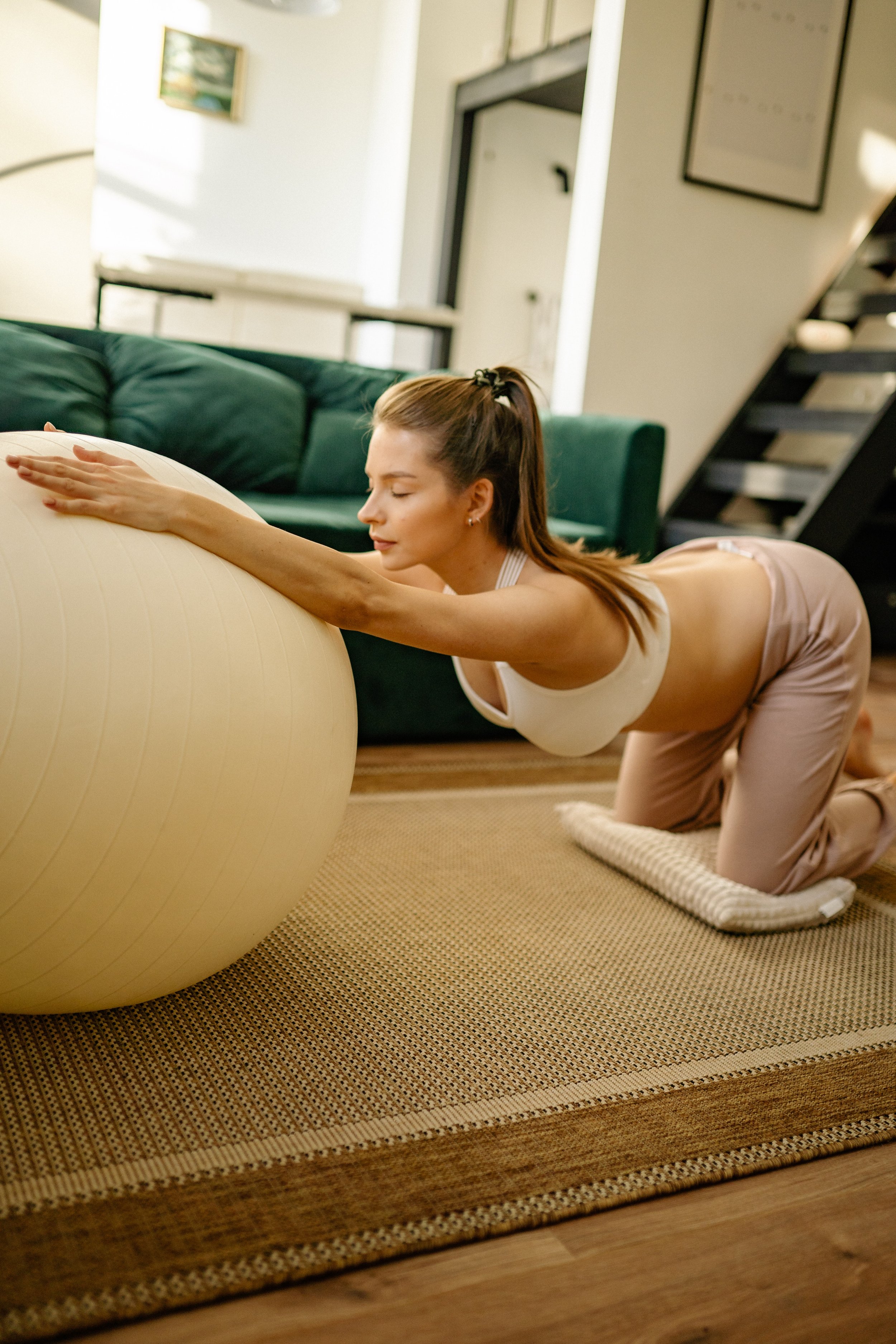Yoga can be a valuable and supportive practice for women during labor, providing physical and emotional benefits that can help to prepare the body and mind for childbirth. By practicing specific yoga poses, women can prepare the body for labor and can develop the strength, flexibility, and focus needed to support the birthing process.
Here are a few of the key yoga poses for labor:
Child's pose
Child's pose is a gentle and restorative pose that can help to calm the mind and to relieve tension in the back and shoulders. During labor, child's pose can provide a sense of grounding and connection, and can help to release physical and emotional tension. To practice child's pose, start on your hands and knees, and bring your buttocks back towards your heels. Reach your arms forward and rest your forehead on the ground. Hold for several breaths, and then release and repeat as needed.
Cat/cow
Cat/cow is a gentle and rhythmic pose that can help to release tension in the back and shoulders and to promote mobility in the spine. During labor, cat/cow can help to prepare the body for the birthing process, and can provide a feeling of openness and release. To practice cat/cow, start on your hands and knees, with your wrists under your shoulders and your knees under your hips. Inhale and let your belly fall toward the floor as you arch your back, lifting your head and tailbone towards the sky. Exhale and round your back, bringing your chin towards your chest and your tailbone towards your pubic bone. Repeat the movement, inhaling and arching your back, and exhaling and rounding your back.
Downward-facing dog
Downward-facing dog is a classic yoga pose that can provide many benefits during labor. This pose can help to strengthen the arms, legs, and back, and can provide a feeling of grounding and connection. To practice downward-facing dog, start on your hands and knees, and lift your buttocks towards the sky, bringing your body into an inverted V shape. Press into your hands and feet, and lift your hips towards the sky. Hold for several breaths, taking as much or as little movement as you need, and then release and repeat as needed.
Squatting
Squatting is a natural and beneficial position for labor, and can help to open the pelvis and to facilitate the birthing process. To practice squatting, stand with your feet hip-width apart, and bring your hands to your hips. Inhale and squat down, bringing your buttocks towards your heels. Hold for several breaths, and then release and repeat as needed. This “high squat” is simply Goddess pose.
For a low squat option, you will want to practice the pose Malasana. Point your toes out toward the imaginary corners of your mat so your knees can safely follow them, and lower your body toward the ground as far as you can go. Holding onto squat bar, chair, bed, or your labor support partner are all great options for you to be able to get into this very low squat.
Relaxation and visualization
Although not actual yoga “poses”, relaxation and visualization are important practices during labor and can help to calm the mind and to focus the attention. To practice relaxation and visualization, lie down on your back or in a comfortable position, and close your eyes. Take a few deep breaths, and focus on your breath. Imagine yourself in a peaceful and relaxing place, and visualize the baby moving down and out of the body. Hold this visualization for several minutes, and then release and repeat as needed.
Yoga can be such a valuable and supportive practice for women during labor, providing physical and emotional benefits that can help to prepare the body and mind for childbirth. By practicing specific yoga poses, women can better prepare the body and mind for labor and can develop the strength, flexibility, and focus needed to support the birthing process. By incorporating these poses into your labor preparation, you can enjoy the benefits of yoga and support your body and mind during this special and transformative time.
